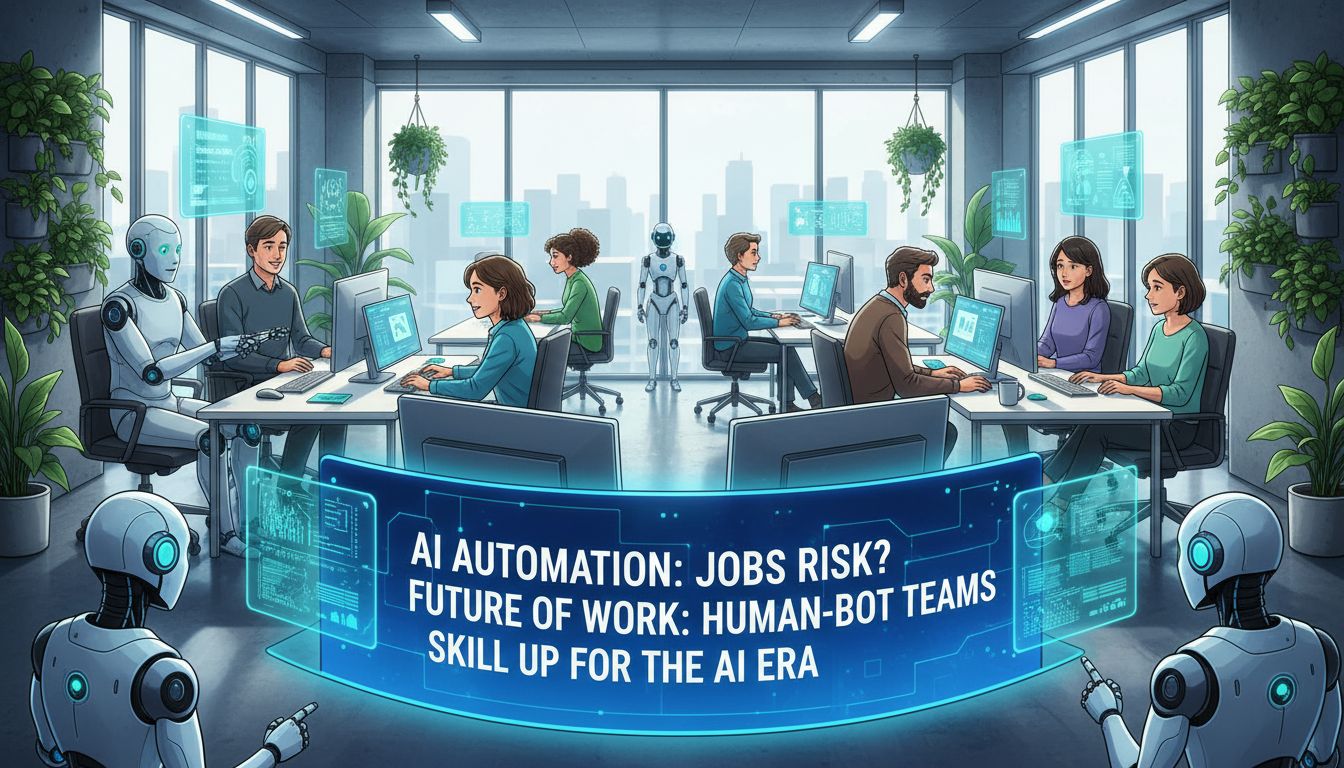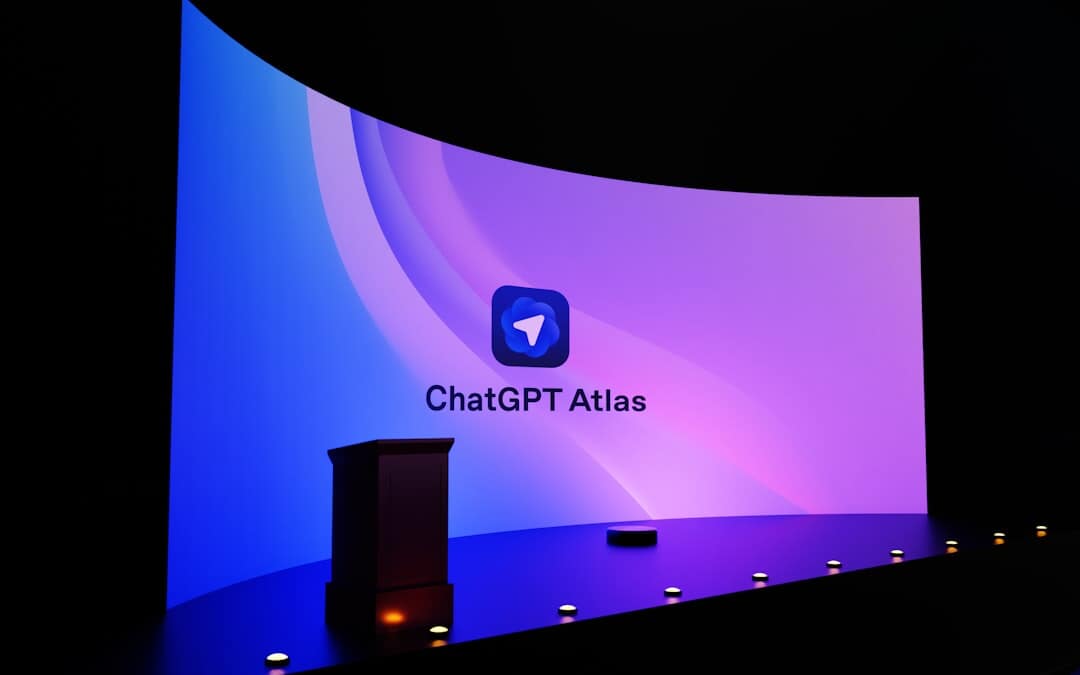Generative model dangers have become a pressing concern as advancements in artificial intelligence (AI) continue to accelerate. These models, such as large language AIs, hold the potential to revolutionize various industries but also pose significant risks if not developed and deployed responsibly.
In this blog post, we will explore the hazards associated with generative AI models like GPT-3 and their potential for amplifying harmful content online. We’ll discuss how developers are working on reducing accidents and misuse in future iterations of these models through reinforcement learning from human feedback (RLHF) and red-teaming strategies.
Additionally, we will delve into the ethical considerations surrounding automating research processes using AI technology. The superintelligence debate among researchers will be examined by presenting arguments supporting its possibility alongside counterarguments against it. Furthermore, we’ll provide examples of generative model failures that resulted in inappropriate content generation or bias and discrimination in AI outputs.
To conclude our discussion on generative model dangers, we’ll highlight collaborative efforts for responsible AI development and outline strategies aimed at mitigating risks associated with these powerful tools.
Table of Contents:
- The Dangers of Advanced AI
- Large Language Models as a Source of Risk
- Amplification of Harmful Content Online
- Reducing Accidents and Misuse in GPT-4
- Automating Research with AI
- Superintelligence Debate Among Researchers
- Examples of Generative Model Failures
- Ensuring Responsible Development of Generative Models
- Frequently Asked Questions Generative Model Dangers
- Conclusion
The Dangers of Advanced AI
In 1960, Norbert Wiener published a prescient essay that highlighted the potential risks associated with advanced artificial intelligence (AI), particularly large language models (LLMs). These powerful tools can amplify harm on the internet if not properly managed and controlled. Understanding these dangers is crucial for mitigating their impact.
Large Language Models as a Source of Risk
As AI technology continues to evolve, LLMs like OpenAI’s GPT-series have become increasingly sophisticated in generating human-like text. While this has led to numerous benefits such as improved natural language processing capabilities and enhanced chatbot experiences, it also presents significant risks. For instance, malicious actors could use LLMs to create convincing fake news articles or spread disinformation at an unprecedented scale.
Amplification of Harmful Content Online
Beyond misinformation, generative models may inadvertently produce content that promotes hate speech, discrimination or other harmful behaviors. As these systems learn from vast amounts of data available online – including biased and offensive content – they can unintentionally perpetuate existing prejudices and stereotypes when generating new text. This amplification effect poses serious challenges for developers who aim to harness the power of AI responsibly while minimizing its negative consequences.
To better understand how we can address these issues effectively , let’s explore some approaches taken by organizations like OpenAI in reducing accidents and misuse before releasing their latest model GPT-4 . Additionally , we’ll discuss potential implications surrounding automating research processes using AI technologies .
The potential risks posed by sophisticated AI must not be ignored, as they could bring about severe repercussions if disregarded. Therefore, it is important to take proactive steps towards reducing accidents and misuse in GPT-4 models by utilizing reinforcement learning from human feedback and red-teaming strategies for responsible development.
Reducing Accidents and Misuse in GPT-4
In the quest to harness the power of artificial intelligence responsibly, OpenAI has implemented several approaches to minimize accidents and misuse before releasing GPT-4. By incorporating reinforcement learning from human feedback (RLHF) and red-teaming strategies, developers can ensure that generative models like GPT-series are used ethically while still providing valuable insights.
Reinforcement Learning from Human Feedback (RLHF)
Reinforcement learning from human feedback is a technique employed by OpenAI to improve AI behavior by training it using data collected through interactions with humans. This method involves collecting real-world examples of how users interact with AI systems, as well as soliciting expert input on ideal responses for specific situations. The model then learns from this information, refining its output based on user preferences and ethical guidelines.
- User interaction data: Gathering anonymized data about how people use AI systems helps developers understand potential pitfalls or areas where improvements are needed.
- Expert guidance: Involving experts in various fields ensures that generated content aligns with established best practices and industry standards.
- Ongoing refinement: As more data is collected over time, RLHF allows for continuous improvement of AI behavior, resulting in safer and more useful outputs.
Red-teaming Strategies for Responsible AI Development
Beyond RLHF techniques, another approach adopted by OpenAI is the practice of red teaming – an adversarial process where external experts are invited to identify potential vulnerabilities and misuse scenarios in AI systems. This proactive strategy helps developers anticipate issues before they arise, allowing them to address concerns and improve the safety of generative models like GPT-4.
- Vulnerability identification: Red teaming allows for the discovery of weak points or flaws within an AI system that could be exploited by malicious actors.
- Misuse scenario analysis: By simulating potential misuse cases, developers can better understand how their technology might be used irresponsibly and take steps to prevent such outcomes.
- Patch deployment: Once vulnerabilities have been identified, OpenAI can implement fixes or updates to mitigate risks associated with these weaknesses, ensuring a safer user experience overall.
Incorporating RLHF techniques and red-teaming strategies into the development process is crucial for reducing accidents and misuse in powerful generative models like GPT-4. By actively seeking out potential issues and addressing them proactively, we can ensure responsible use of artificial intelligence while still reaping its many benefits across various industries.
To reduce accidents and misuse in GPT-4, the use of reinforcement learning from human feedback (RLHF) and red-teaming strategies for responsible AI development are essential. Automating research with AI can offer potential benefits but must be done responsibly to ensure ethical considerations are taken into account.
OpenAI is taking measures to minimize accidents and misuse before releasing GPT-4 by implementing reinforcement learning from human feedback (RLHF) and red-teaming strategies. RLHF involves collecting real-world examples of how users interact with AI systems, soliciting expert input on ideal responses for specific situations, and ongoing refinement. Red teaming allows for the discovery of weak points or flaws within an AI system that could be exploited by malicious actors, simulating potential misuse cases, and patch deployment once vulnerabilities have been identified.
Automating Research with AI
Utilizing AI, research processes can be automated, thus enabling researchers to make groundbreaking discoveries more efficiently. By leveraging the power of generative models like GPT-4, researchers may be able to streamline their work and make groundbreaking discoveries more efficiently. It is essential to contemplate the ethical issues and risks that may arise when using AI for research automation.
Potential Benefits of Automating Research with AI
- Increased efficiency: With AI-powered tools handling time-consuming tasks such as data analysis or literature reviews, researchers can focus on developing new ideas and formulating hypotheses.
- Faster discoveries: Generative models can process vast amounts of information at incredible speeds, potentially leading to quicker breakthroughs in fields like medicine or climate science. For example, Google DeepMind’s AlphaFold has already made remarkable strides in protein folding prediction (source).
- Cross-disciplinary collaboration: Advanced AI systems could help bridge gaps between different scientific disciplines by identifying connections that human researchers might overlook.
- Democratization of knowledge: As these technologies become more accessible and affordable, smaller institutions or independent researchers will also benefit from their capabilities.
Ethical Considerations Surrounding Automated Research Processes
Achieving the benefits mentioned above requires addressing several concerns related to how generative models might go wrong when applied to scientific research. Some key considerations include:
- Data quality issues: AI systems are only as good as the data they’re trained on. If a generative model is fed biased or incomplete information, its output could be misleading or even harmful.
- Loss of human intuition: While AI can process vast amounts of data quickly, it may not possess the same level of creativity and intuition that humans bring to problem-solving.
- Ethical dilemmas: As AI takes on more responsibility in research processes, questions about accountability and transparency become increasingly important. For instance, who should be held responsible if an AI-generated hypothesis leads to negative consequences?
- Misuse potential: Advanced technologies like GPT-4 also carry risks related to misuse by bad actors for purposes such as generating disinformation or manipulating public opinion. Ensuring these tools are used responsibly in research settings is crucial.
In order to harness the full potential of generative models for automating research while minimizing associated risks, developers and researchers must work together proactively. By considering both benefits and challenges presented by this technology, we can strive towards a future where scientific discoveries are accelerated without compromising ethical standards.
Automating research with AI has the potential to revolutionize our understanding of many complex topics, but also carries a great responsibility in terms of ethical considerations. It is imperative for scientists to deliberate carefully on the potential and effects of advanced AI.
Generative models like GPT-4 can automate research processes, leading to increased efficiency and faster discoveries. However, ethical considerations such as data quality issues, loss of human intuition, ethical dilemmas, and misuse potential must be addressed for responsible use in research settings. Developers and researchers must work together proactively to harness the full potential of generative models while minimizing associated risks.
Superintelligence Debate Among Researchers
The concept of superintelligence, or the development of AI systems that far surpass human intelligence, has been a topic of debate among researchers for quite some time. While few believe it is possible to achieve such an advanced level in generative models like GPT-4, understanding both sides of this argument can help us better comprehend potential consequences should these advancements occur.
Arguments Supporting Superintelligence Possibility
Proponents of superintelligence argue that as technology continues to advance at an exponential rate, it is only a matter of time before we create AI systems capable of outperforming humans in virtually every domain. They point to examples like AlphaGo, which defeated world champion Go players using deep learning techniques and demonstrated the rapid progress being made in artificial intelligence research.
- Moores Law: The observation that computing power doubles approximately every two years suggests that technological advancements will continue at an accelerated pace.
- Innovation Feedback Loop: As AI becomes more intelligent and efficient, it could contribute to its own development by automating aspects of research and innovation processes.
- Cognitive Enhancements: With breakthroughs in neuroscience and brain-computer interfaces (BCIs), there may be ways for humans to enhance their cognitive abilities alongside advancing AI technologies.
Counterarguments Against Superintelligence
Skeptics maintain several counterarguments against the possibility of achieving superintelligent machines. They emphasize current limitations within AI research and question whether our understanding will ever reach a point where creating self-improving autonomous agents with superior intellect becomes feasible.
- Complexity of Human Intelligence: The human brain is an incredibly complex system, and replicating its intricacies in a machine may prove to be insurmountable.
- Fundamental Limits: There may be inherent limits to the capabilities of AI systems due to constraints imposed by physics or computational resources.
- Ethical Concerns: As AI advances, there will likely be increased focus on addressing ethical considerations surrounding superintelligence. This could potentially slow down progress or redirect research efforts towards more responsible development practices.
In this ongoing debate about the potential for superintelligent machines, it’s essential that we continue exploring both sides of the argument while considering possible consequences. By doing so, we can better prepare ourselves for any future advancements in generative models like GPT-4 and ensure that these technologies are developed responsibly with minimal risks involved.
The discussion about the potential of superintelligence is still in progress, and different points of view on this matter are evident. As such, examples of generative model failures can provide insight into potential dangers associated with AI development.
Researchers are debating the possibility of superintelligence, with proponents arguing that AI systems will eventually surpass human intelligence due to technological advancements and an innovation feedback loop. Skeptics argue that replicating the complexity of human intelligence in a machine may be insurmountable, and ethical concerns surrounding superintelligence must be addressed.
Examples of Generative Model Failures
Despite efforts to reduce accidents and misuse in generative model applications like GPT-series by OpenAI, there have been instances where things went wrong. Analyzing these examples will allow us better insight into addressing challenges posed by these technologies.
Inappropriate Content Generation
One common issue with generative models is the generation of inappropriate or offensive content. This can occur when the AI system inadvertently learns from biased data or fails to filter out harmful language patterns. For example, Microsoft’s chatbot Tay was taken offline after it started tweeting racist and sexist comments. By examining such cases, developers can work on refining their algorithms and incorporating safety measures that prevent similar issues in future iterations.
Bias and Discrimination in AI Outputs
- Racial Bias: In 2023, researchers discovered that GPT-3 exhibited racial bias when generating text based on certain prompts. The model tended to associate negative words with specific ethnic groups more frequently than others. Addressing this type of bias requires careful examination of training data as well as ongoing monitoring for potential discrimination within generated outputs.
- Gender Bias: Another form of bias found in generative models is gender-based discrimination. A study conducted by Stanford University revealed that a popular NLP tool called GloVe displayed gender stereotypes when completing sentences related to occupations (source). This highlights the need for developers to actively work on mitigating gender bias in AI systems.
- Biased Recommendations: Generative models can also produce biased recommendations, leading to unfair treatment of certain groups. For instance, a study showed that an AI system used by courts in the United States was more likely to falsely label black defendants as high-risk compared to white defendants (source). Such cases emphasize the importance of transparency and fairness when developing generative models for decision-making processes.
To ensure responsible AI development, it is essential for those involved to work together and recognize potential risks associated with generative models.
Generative models can pose a hazard if not properly handled, thus necessitating awareness of the risks that may come with them from all involved parties. To this end, collaborative efforts for responsible AI development as well as strategies for mitigating these risks should be explored in order to guarantee the safe and ethical use of generative models.
Generative models like the GPT-series have been prone to accidents and misuse, resulting in inappropriate content generation and bias. These issues highlight the need for developers to refine their algorithms, incorporate safety measures, examine training data carefully, monitor potential discrimination within generated outputs, mitigate gender bias in AI systems, and ensure transparency and fairness when developing generative models for decision-making processes.
Ensuring Responsible Development of Generative Models
As generative models continue to advance, it is essential that developers, researchers, and stakeholders collaborate on responsible development practices. By addressing potential risks proactively, we can harness the benefits of these technologies while minimizing their negative impact. In this section, we will explore collaborative efforts for responsible AI development and strategies for mitigating the risks associated with generative models.
Collaborative Efforts for Responsible AI Development
To ensure the ethical use of generative models like GPT-4 by OpenAI, a multi-stakeholder approach must be adopted. This involves collaboration between various parties, such as:
- Developers: They should prioritize safety research alongside performance improvements in AI systems.
- Policymakers: Regulators need to establish guidelines and enforce compliance measures that promote transparency and accountability in AI applications.
- Auditors: Independent organizations should assess the safety features and potential biases present in large language models before deployment.
- Civil Society Organizations (CSOs): These groups can advocate for public interest concerns related to AI technology’s societal implications.
- The Public: Encouraging open dialogue among users helps raise awareness about potential issues tied to advanced artificial intelligence systems like LLMs.
This collective effort ensures that diverse perspectives are considered when developing policies surrounding responsible AI usage. For example, OpenAI has sought external input through red teaming exercises and solicited public opinions on topics like system behavior disclosure mechanisms (source).
Strategies for Mitigating Risks Associated with Generative Models
In addition to collaboration, there are several strategies that can be employed to minimize the dangers associated with generative models:
- Improving default behavior: AI developers should strive to make their systems useful and respectful of user values “out-of-the-box” by reducing biases and refining system outputs.
- User customization: Allowing users some degree of control over AI system behavior ensures that it caters to individual needs while adhering to societal norms. However, striking a balance between customization and preventing malicious use is crucial.
- Risk assessment frameworks: Implementing standardized risk assessment processes helps identify potential issues before they escalate. For instance, OpenAI uses reinforcement learning from human feedback (RLHF) as a safety measure in GPT-4 development.
- Ongoing monitoring and evaluation: Regularly assessing AI systems post-deployment enables timely identification of problems and allows for continuous improvement based on real-world experiences.
Taking these steps will help ensure responsible development practices are followed throughout the lifecycle of generative models like GPT-4, ultimately leading us towards harnessing their full potential without compromising safety or ethical considerations.
Developers, policymakers, auditors, civil society organizations, and the public should collaborate to ensure responsible development practices for generative models like GPT-4. Strategies for mitigating risks associated with these models include improving default behavior, user customization, risk assessment frameworks, and ongoing monitoring and evaluation. By proactively addressing potential risks and adhering to ethical considerations throughout the lifecycle of these technologies, we can harness their benefits while minimizing negative impacts.
Frequently Asked Questions Generative Model Dangers
What are the dangers of generative AI?
The primary dangers of generative AI include the amplification of harmful content, the generation of inappropriate or biased outputs, and potential misuse for disinformation campaigns. These risks can lead to societal harm and ethical concerns. To mitigate these issues, researchers focus on responsible development strategies like red-teaming and reinforcement learning from human feedback (RLHF). Learn more about AI risks.
What are some societal risks involved with the use of generative models in science?
Societal risks associated with using generative models in science involve potential biases in research outcomes, misinterpretation or overreliance on generated data, and ethical dilemmas surrounding automated research processes. Ensuring transparency, collaboration among stakeholders, and proper evaluation methods can help address these concerns. Explore challenges related to AI applications in scientific research.
What is one major problem with Generative Adversarial Networks (GANs)?
A significant issue with GANs is mode collapse, which occurs when a generator produces limited variations despite diverse input data. This results in poor-quality outputs that fail to represent complex real-world scenarios accurately. Researchers have proposed various techniques to tackle this challenge, such as Wasserstein GANs and Progressive Growing GANs.Read more about addressing mode collapse.
What are the disadvantages of Generative Adversarial Networks (GANs)?
Disadvantages of GANs include training instability due to adversarial dynamics between generator and discriminator, mode collapse, sensitivity to hyperparameters, and susceptibility to generating biased or inappropriate content. Researchers continue working on improving GANs by developing new architectures and training techniques. Discover more about GAN challenges.
Conclusion
Generative Model Dangers pose a significant risk to society, especially as advanced AI continues to develop. Large language models can be used to amplify harmful content online, and there are ethical considerations surrounding automated research processes.
To reduce accidents and misuse in GPT-4, researchers must implement responsible AI development strategies such as reinforcement learning from human feedback (RLHF) and red-teaming. Additionally, it’s crucial for collaborative efforts towards responsible AI development to continue while mitigating the risks associated with generative models.






